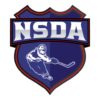Body checking is an essential skill in hockey, integral to the game’s strategy and excitement. However, body checking and body contact are often misunderstood or poorly executed, especially by young players just entering the game. This article aims to provide a comprehensive guide on the fundamentals of body checking, emphasizing awareness, body posture, and techniques.
Body Checking Vs. Body Contact: Know the Difference
First off, it’s crucial to understand the difference between body checking and body contact. Body contact occurs naturally in the game and can happen anywhere on the rink. It’s the incidental physical interaction between players that happens whether or not a checking game is being played. Body checking, on the other hand, is an intentional act designed to separate an opponent from the puck.
The Importance of Awareness
The starting point for any player entering the realm of checking is awareness. Skaters should cultivate a 360-degree field of vision, always knowing who is around them and where contact might be coming from. This situational awareness enables them to better anticipate plays, making the check more effective and safer for everyone involved.
The Hockey Stance: Foundation for Body Checking
Before attempting to execute a check, players must master the basic hockey stance. Your knees should be bent, shoulders over your knees, and your weight should be on the balls of your feet. This position enables you to absorb a hit or deliver a strong check with power emanating from your legs. Getting caught on your heels can result in a fall while being too far on your toes can make it difficult to maintain balance.
Techniques: The Three Main Areas to Check With
There are three primary areas you can use to execute a body check:
- Shoulder: This is the most common technique used for checking. Lead with your shoulder to make contact with the opponent.
- Hips: You can also use your hips to make contact, especially when angling an opponent towards the boards.
- Hands: Although using one hand can result in a penalty, you can use both hands to deliver a check, ensuring they move in unison to avoid penalties for roughing.
Timing is Everything
Proper timing can make or break your body-checking game. If you approach an opponent too early or too late, you’re more likely to miss the check or be the one knocked down. Patience and observation are key. Often, slowing down a little can better align your timing to deliver an effective body check.
Open-ice Hits and Angling
In an open-ice situation, angling is critical. By approaching your opponent at a certain angle, you can effectively predict and control their movements, making your check more successful. Failing to properly angle can lead to missed checks and potential penalties.
Safety Guidelines for Body Checking
Safety is paramount when it comes to body checking. Always avoid hitting an opponent from behind or making head contact. If you see the back numbers on an opponent’s jersey, it’s a sign to pull up and avoid the body check. Head contact can result in serious injuries and suspensions.
Getting a concussion properly diagnosed and treated is incredibly important to a player’s long-term health. A hockey player is a person first and foremost, and with the long-term effects of concussions, protecting the brain should always be the top priority. You can visit Hockey Canada’s Concussion Prevention Resource Centre for more information.
Forward-Defense Considerations
Whether you are a forward or a defenseman, understanding the area around the ice known as the “danger zone” is critical. It’s roughly three feet away from the boards, and hitting an opponent in this zone can lead to severe injuries. Players should either go tight to the boards or move towards the center to avoid these dangerous hits.
Practice Makes Perfect
Like any other skill, body checking needs to be practiced, worked on, and taught methodically. It is crucial for young players to get comfortable with body contact and checking in controlled practice settings before applying these skills in actual games.
Conclusion
Mastering the art of body checking is not just about adding physicality to your game; it’s about enhancing your overall hockey skills, understanding spatial awareness, and most importantly, ensuring the safety of all players on the ice. By focusing on these fundamentals, you can become a more effective and responsible player.
Want to connect and share ideas with other hockey coaches from around the world? Join our Minor Hockey Coaches Group on Facebook, which has coaches from Canada, the United States, Europe and even Australia.
Looking for help to practice more of your skills? Check out the rest of our videos here.
